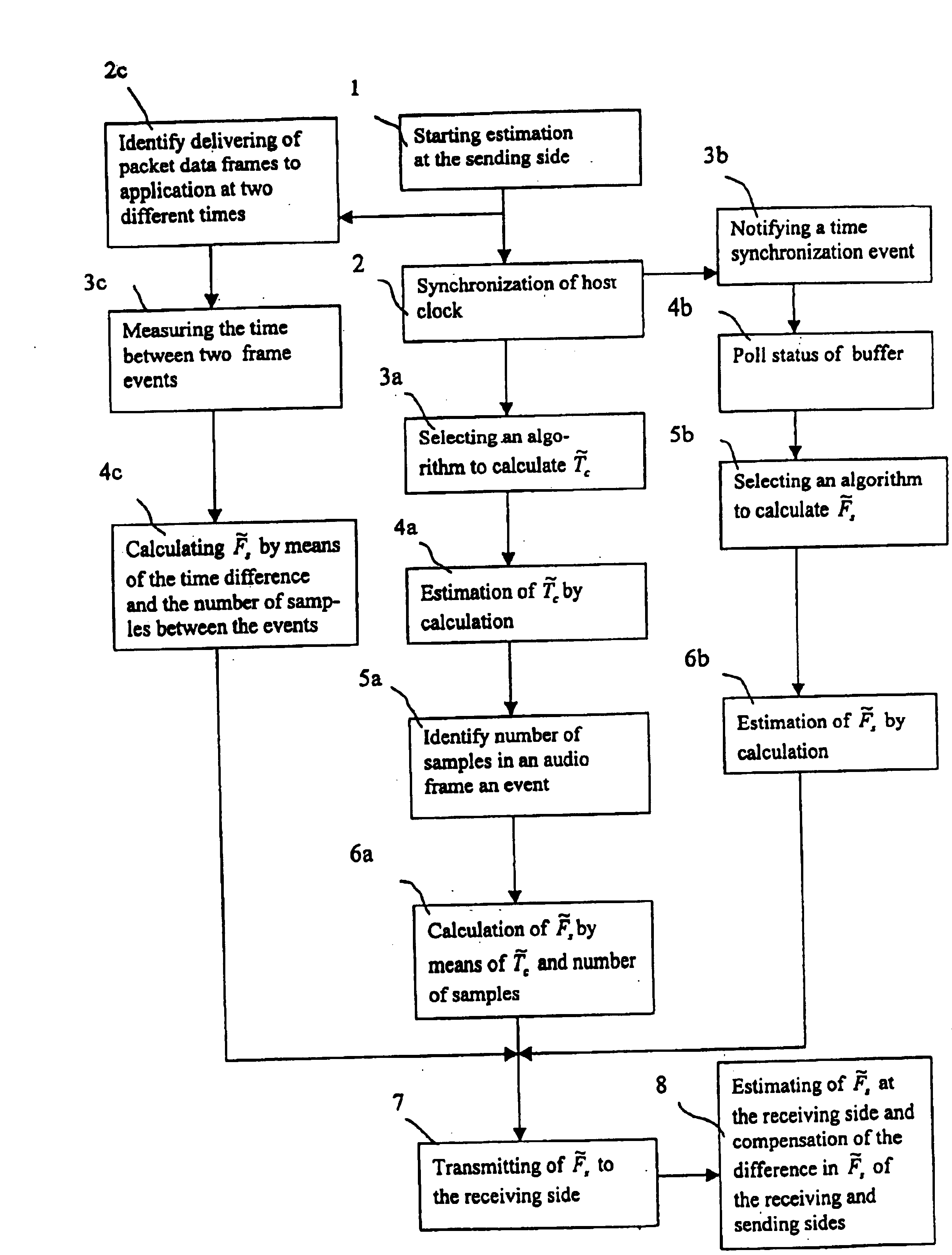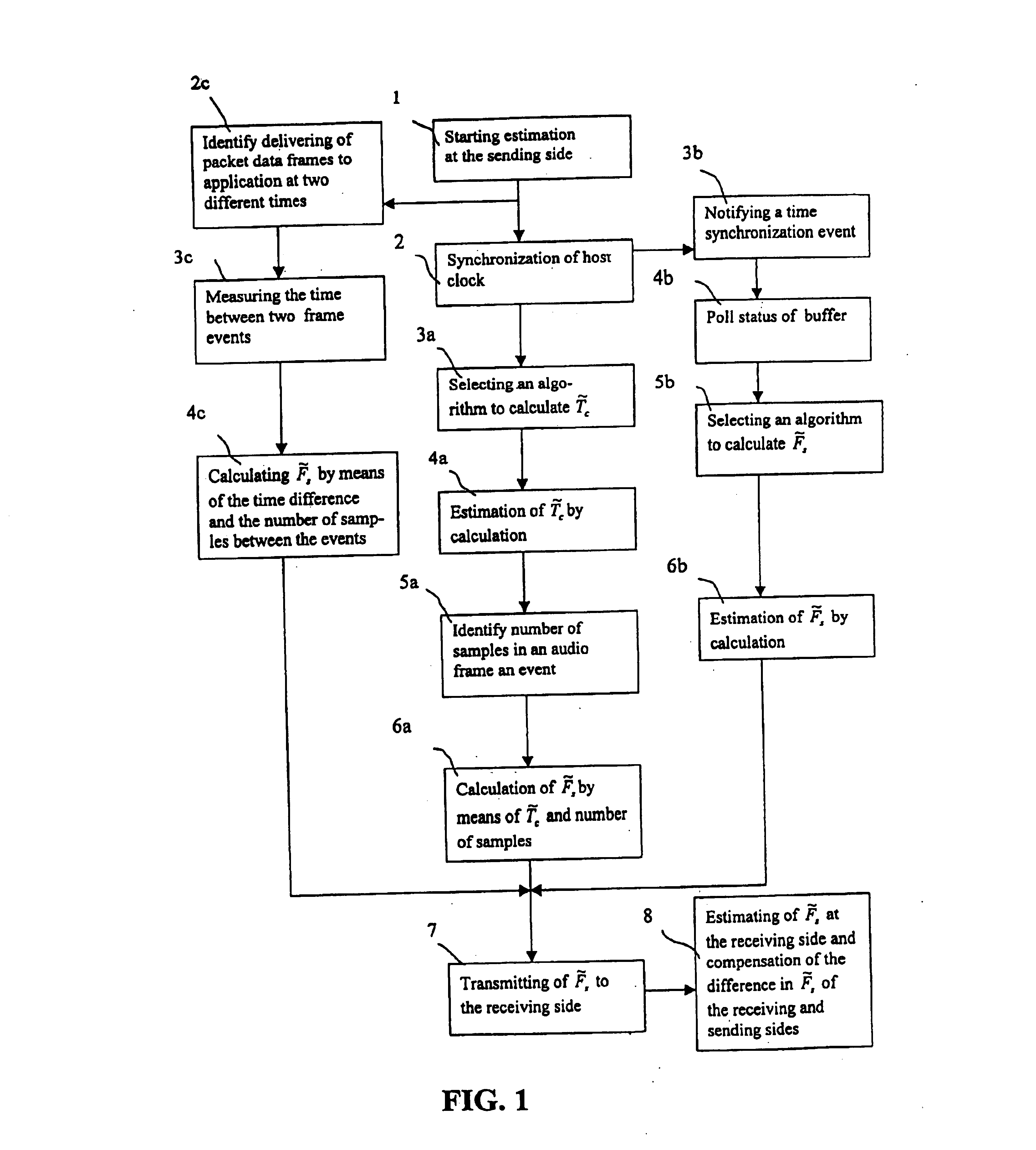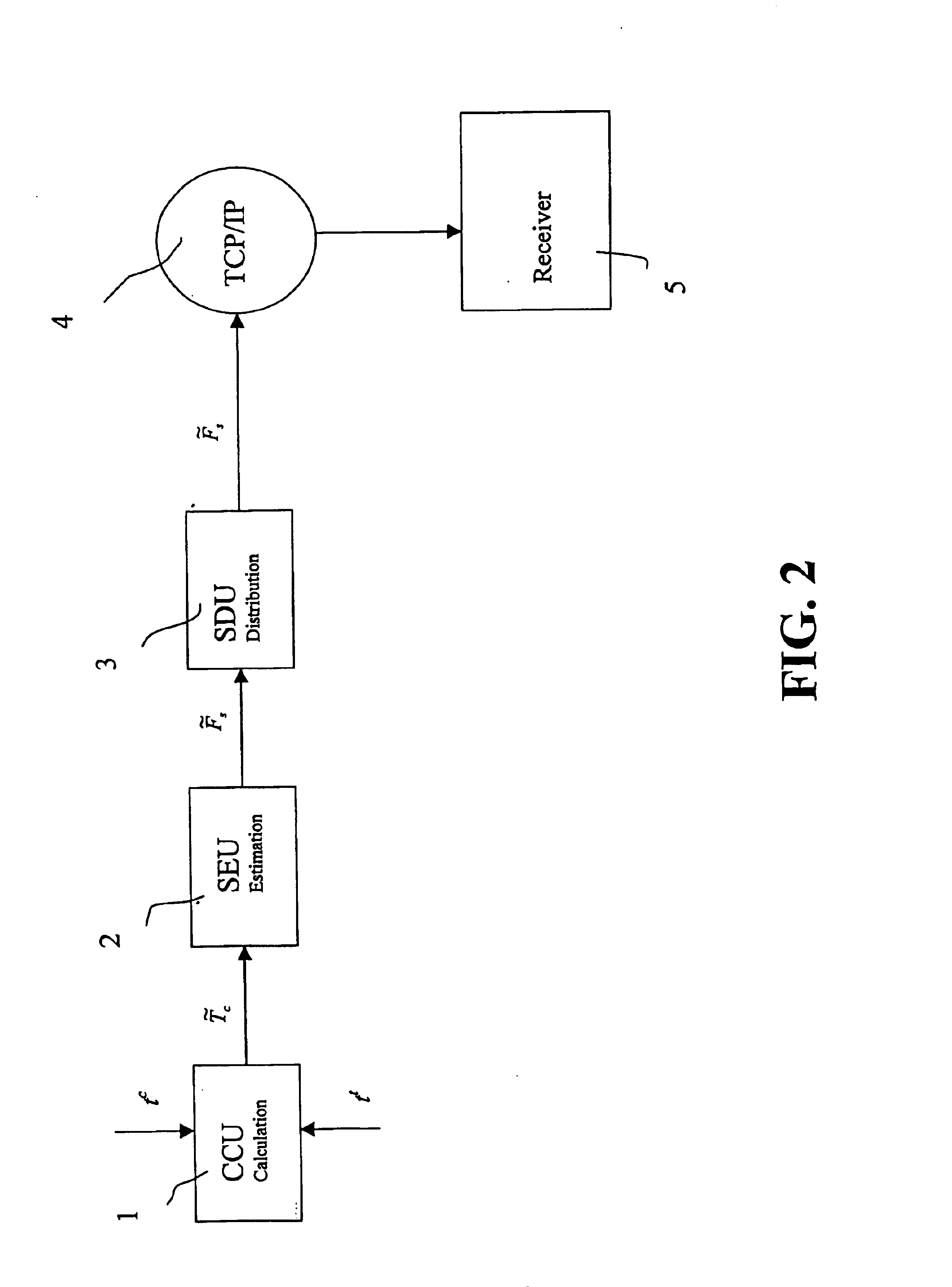Method for sending information in a telecommunication system
- Summary
- Abstract
- Description
- Claims
- Application Information
AI Technical Summary
Benefits of technology
Problems solved by technology
Method used
Image
Examples
first embodiment
1) The steps of the invention are indicated with letter “a” in FIG. 1.
The estimation process starts at the sending side of a transceiver in a telecommunication system as indicated in step 1 of FIG. 1. Step 1 is common for all of the three illustrated embodiments of the invention.
The sampling frequency can be estimated in different ways, for example depending on if there is a possibility to poll the buffer status to find out how many samples there are available to be brought up to the application. In the first and second embodiments of the invention it is assumed that, there is no possibility to determine the status of the buffer. In these first and second embodiments, the events, when the buffer deliver packet frames to the application, are used in the estimation of the sampling frequency. When for example audio frames are delivered to the application, they usually have a fixed block size, for instance the number of samples needed as input to a speech coding unit.
An accurate and fas...
second embodiment
2) The steps of the invention 4s indicated with letter “c” in FIG. 1.
In the second embodiment, the estimation can be done without making use of the time synchronization events.
Also in the second embodiment of the invention, the sampling frequency is estimated by means of the time between two different frame events as polling of the buffer status is not carried out or cannot be done depending on the construction of the operative system and the soundboard. However, if the time between host synchronization events is larger than the measurement time, the inaccuracy in the estimate will be as large as the unsynchronized host clock.
In step 2c, delivering of data, e.g. audio frames to the application, is identified. The time between two frame events is then measured in step 3c, where after the sampling frequency, {tilde over (F)}s, can be estimated by calculation as indicated in step 4c, for example from the equation F~s=N(n-m)tnh-tmh
wheretnh−tmh is the difference between the arriving tim...
third embodiment
3) the invention requires the possfbility to poll the audio buffert status. This embodiment is indicated with letter “b” in FIG. 1.
As soon as there is a time synchronization event as indicated in step 2, the most accurate time for the host clock, th will be available. Since th is synchronized to tt, tt can be used in the equation instead of th. At these events, the status of the buffer is polled in step 4b and the sampling frequency can be calculated based on the time between the synchronization events and the number of samples that has been sampled between them. Different algorithms can be used to calculate {tilde over (F)}s as is indicated in step 5b and a suitable algorithm can be expressed as
{tilde over (F)}s=f(tsm, tsn, ttm, ttn)
where the function, with which {tilde over (F)}s is estimated in step 6b might be
f(tsm, tsn, ttm, ttn)=(tsn−ts0) / (ttn−tt0)
whereintsn is the time of the sample clock at time point n,ts0 is the time of the sample clock at time point 0, for example when ...
PUM
 Login to View More
Login to View More Abstract
Description
Claims
Application Information
 Login to View More
Login to View More - Generate Ideas
- Intellectual Property
- Life Sciences
- Materials
- Tech Scout
- Unparalleled Data Quality
- Higher Quality Content
- 60% Fewer Hallucinations
Browse by: Latest US Patents, China's latest patents, Technical Efficacy Thesaurus, Application Domain, Technology Topic, Popular Technical Reports.
© 2025 PatSnap. All rights reserved.Legal|Privacy policy|Modern Slavery Act Transparency Statement|Sitemap|About US| Contact US: help@patsnap.com



